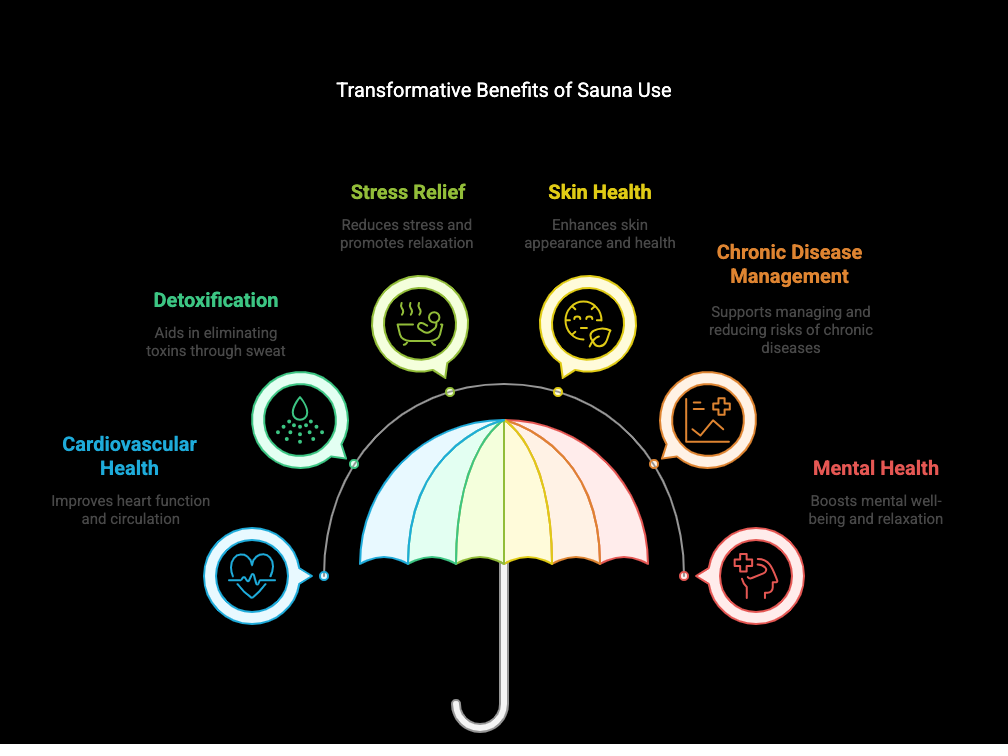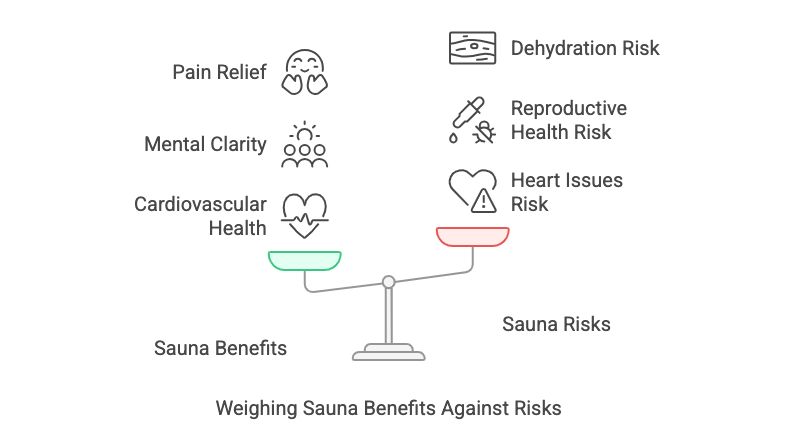Key Highlights
- Welcome to a comprehensive guide on the transformative advantages of integrating sauna sessions into your daily routine and wellness routine. Dr. Kulmeet Kundlas, a primary care physician, shares his personal and professional insights on the remarkable benefits that sauna use can offer.
- Regular sauna use leverages heat exposure to provide multifaceted health benefits, including improved cardiovascular health, detoxification, and stress relief.
- Infrared saunas operate at lower temperatures, providing a gentler option for those sensitive to high temperatures.
- Saunas assist in improving skin health, supporting collagen production and cleansing pores through sweat.
- Experts highlight benefits for chronic disease management, including aiding in cancer survivorship and reducing risks of cardiovascular disease.
- Consistent use bolsters mental health, aiding in stress relief, enhancing relaxation, and promoting good health overall.

Introduction and Personal Experience
Hello there. My name is Dr. Kulmeet Kundlas, and I’m here to share how starting each morning with a workout followed by a rejuvenating sauna session and incorporating cold therapy has been a game changer for me over the past year. As someone who’s exercised all my life, I’ve noticed profound improvements in my overall wellness since adding sauna and cold therapy into my routine. I feel relaxed and detoxified, my muscles and joints are more limber, my skin is glowing, my breath feels deeper, and I enjoy a level of mental clarity that is truly refreshing.
Social and Historical Context of Sauna
Sauna sessions have fostered many friendships during the 20 to 25 minutes I spend soaking in the heat. These moments of social fellowship add to the numerous physical benefits I’ve experienced, and I’ve learned that sauna usage and its many sauna benefits have a long history. Finland, known for its abundant saunas, boasts one in three people engaging in regular sessions, showcasing improved health metrics, increased longevity, and fewer chronic illnesses.
My conversations in the sauna often lead to questions about its benefits, usage duration, and potential contraindications. Sharing evidence-based insights gathered through literature review, I realized the value of compiling this information into a comprehensive guide for my friends and sauna enthusiasts.

Understanding Sauna Dynamics
Upon entering a sauna with temperatures ranging from 150 to 195 degrees Fahrenheit, your brain perceives this thermal change as a threat, activating your sympathetic nervous system. This results in an increased heart rate and widened blood vessels, causing instant perspiration. Initially, norepinephrine is released, enhancing alertness. As you settle in, the parasympathetic system takes over, reducing cortisol levels while boosting endorphins, dopamine, and serotonin levels. This transition leads to a profound sense of relaxation and well-being.
Types of Saunas
Saunas come in several variations, including:
- Dry Heat Saunas: Heat generated by a heater warms the surrounding air, transferring heat to the body.
- Moist Saunas: Steam transmits heat to the body, providing a different thermal experience.
- Infrared Saunas: Utilizing lower temperatures, infrared saunas allow deep penetration of heat waves, delivering similar benefits with reduced thermal exposure.
Saunas have been employed for centuries to harness the detoxifying power of dry and humid heat to improve cardiovascular health. While heat exposure may seem intensive, it yields exercise-comparable benefits, akin to a brisk walk or light jogging without promising weight loss since any weight change merely reflects water loss.

Sauna Usage Guidelines
For optimal health benefits, sauna sessions should last between 5 to 30 minutes, with the sweet spot around 20 minutes. An ideal frequency is 2-4 times per week post-exercise. If you feel dizzy or stop sweating during your session, it may indicate dehydration—it’s vital to always listen to your body.
Precautions and Summary
Despite its benefits, sauna use is not advisable for everyone. People with newly diagnosed heart issues, those on fresh blood pressure medication, pregnant individuals, and those dehydrated should steer clear. Young males particularly need to be cautious due to potential heat damage to testicles, affecting sperm count and overall health, which can relate to all-cause mortality, and should limit sessions to 10-15 minutes.
In summary, saunas offer remarkable benefits for middle-aged adults, paralleling cardiovascular exercise, enhancing mental clarity, and alleviating pain and stress. However, caution and awareness are essential to ensure a safe and rewarding experience. Thank you for joining this journey with me into the invigorating world of saunas!

Frequently Asked Questions
How Often Should I Use a Sauna for Health Benefits?
To get the best health benefits from sauna use, try to go for 2 to 3 sessions each week. The best time for each session should last around 15 to 20 minutes. You can change how often you go based on your comfort and any health issues you may have. Always check with a healthcare professional if you are not sure.
Can Pregnant Women Safely Use Saunas?
Pregnant women need to be careful with sauna use. Overheating can harm the baby’s growth. It is important to talk to a healthcare provider before using a sauna while pregnant. This way, they can see if it is safe and reduce any possible risks.
What Should I Do Before and After Using a Sauna?
Before you use a sauna, make sure to drink enough water and stay away from big meals. After your session, drink fluids and let your body cool down slowly, especially if you have been exposed to cold temperatures. Stretching can help you relax and stop your muscles from becoming tight. Pay attention to how you feel; if you don’t feel good, go outside for fresh air right away.
Are There Any Immediate Health Risks with Sauna Use?
Saunas are usually safe for many people. However, there are some health risks, including adverse effects such as dehydration, heat exhaustion, and stress on the heart, to be aware of. People with specific medical issues should see a doctor before using a sauna. This way, they can reduce the chances of problems and have a safe experience.
How Does Sauna Use Affect Chronic Health Conditions?
Sauna use can benefit people with long-term health problems and provide health benefits of sauna use. It helps you relax, improves blood flow, and lowers inflammation. Going to the sauna regularly might ease the symptoms of arthritis, heart issues, and breathing difficulties. This can lead to a better quality of life for those facing these health challenges.


